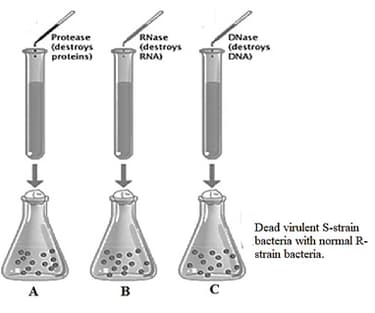EASY
Earn 100
Define vector.
Important Questions on Genetics of the Future
EASY
EASY
EASY
EASY
MEDIUM
Match the organism with its use in biotechnology.
| (a) | Bacillus thuringiensis | (i) | Cloning vector |
| (b) | Thermus aquaticus | (ii) | Construction of first rDNA molecule |
| (c) | Agrobacterium tumefaciens | (iii) | DNA polymerase |
| (d) | Salmonella typhimurium | (iv) | Cry proteins |
EASY
EASY
EASY
EASY
MEDIUM
EASY
EASY
MEDIUM
EASY
Following statements describe the characteristics of restriction endonucleases. Identify the incorrect statement.
MEDIUM
EASY
EASY
EASY
MEDIUM

EASY

